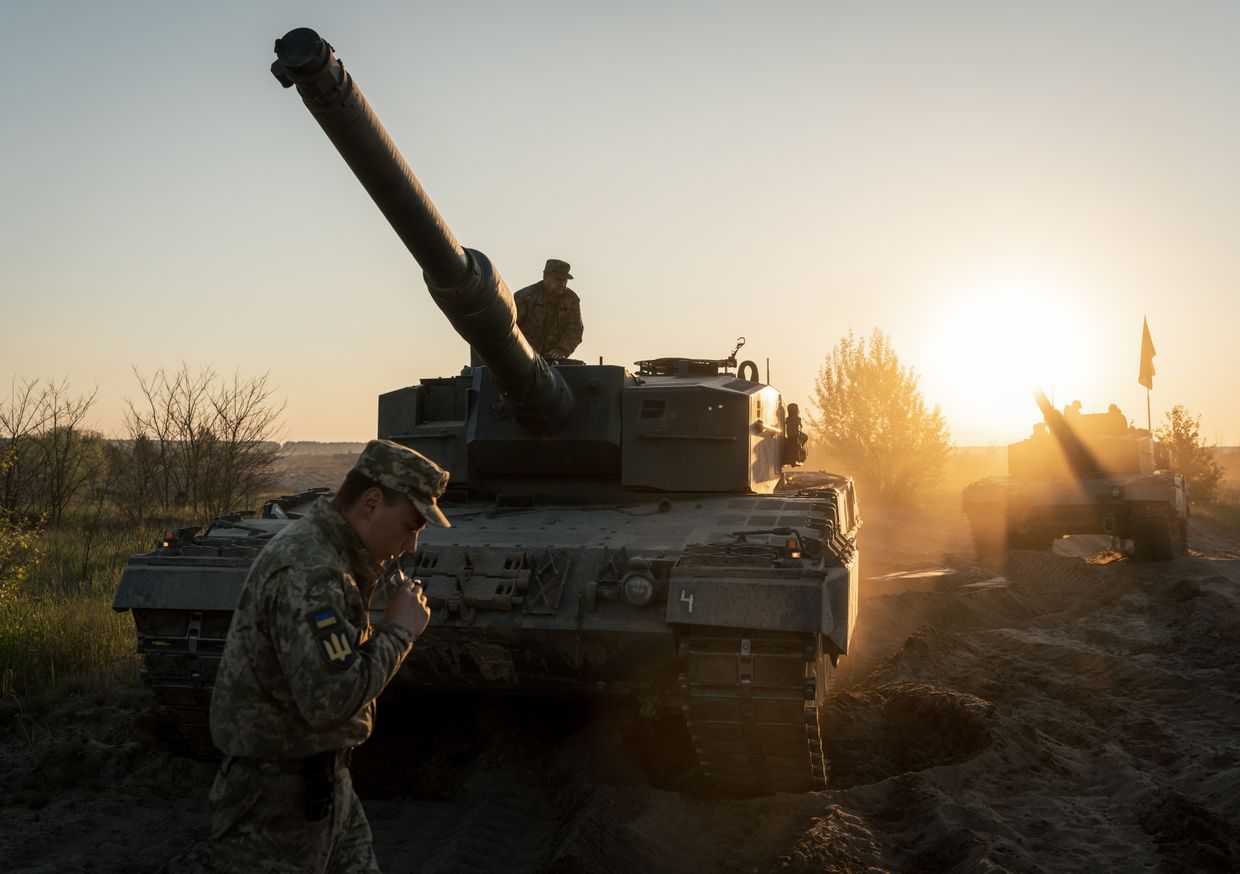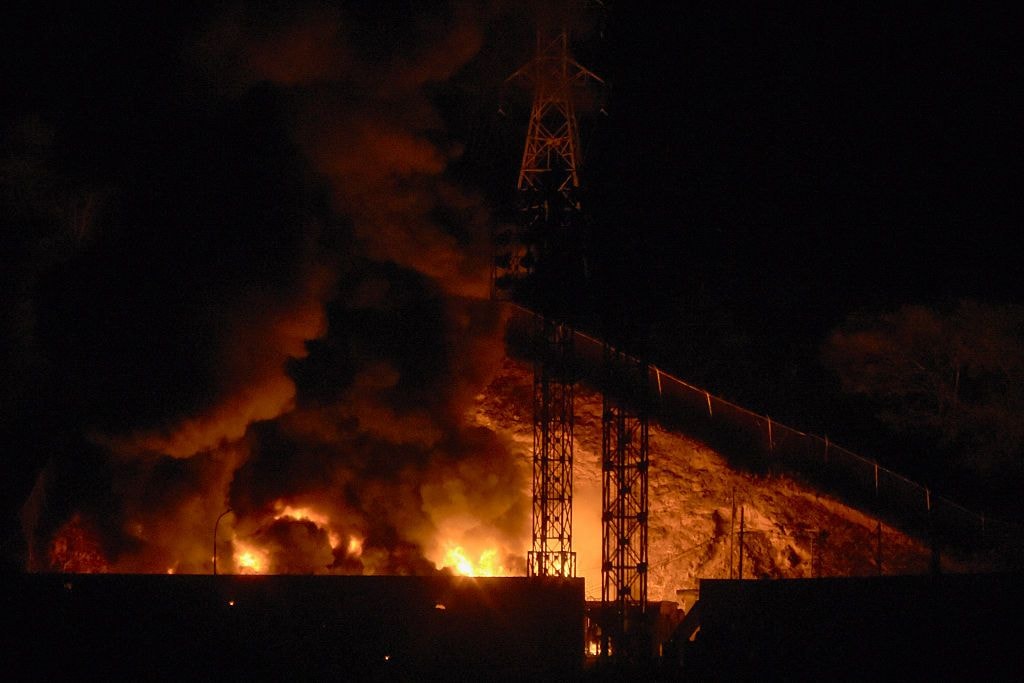Ukraine war latest: Russian mass missile strike on Ukraine kills 9, injures over 80, including children

Key developments on Jan. 23:
- Russia launches mass missile attack against Ukraine, killing 9, injuring over 80, including children
- Ukraine downs 21 out of 41 Russian missiles
- Russian attack on Kharkiv leaves 11,000 people without power
- Russia using relatively accurate, recently designed North Korean missiles against Ukraine, NYT reported
- Defense Ministry after Ramstein summit: Ukraine to receive more long-range weapons
Russian troops launched a mass missile attack against Ukrainian cities on the morning of Jan. 23, killing at least nine people and injuring over 80, according to local authorities.
The attack hit Kyiv, Dnipropetrovsk, Kharkiv, and Sumy oblasts.
In his evening address, President Volodymyr Zelensky said that the mass strike had killed 18 people and injured 130. It is not clear casualties from what attacks were included in Zelensky's count.
Following the morning strikes, multiple attacks occurred later in the day in several regions, including Kherson and Kharkiv oblasts.
In the early morning, Russia targeted Ukraine with 41 missiles, of which 21 were shot down by air defenses, the General Staff of Ukraine's Armed Forces said.
To attack Ukraine, Russia used cruise, ballistic, aerial, and anti-aircraft-guided missiles, according to the report. Ukraine shot down all 15 Kh-101/555/55 Russian cruise missiles, five ballistic Iskander missiles, and one aerial guided missile, Kh-59.
Kharkiv was hit with 12 missiles, including S-300, Kh-32, and Iskander missiles, Kharkiv Oblast Governor Oleh Syniehubov reported. The attacks targeted civilian infrastructure and residential buildings.
The biggest number of casualties was also reported in Kharkiv: Eight people were killed, and 57 people, including six children, were injured as of 7 p.m.
In the evening, Serhii Bolvinov, the head of the investigative department of the regional police, reported that the body of an eight-year-old girl was found under the rubble of a high-rise residential building damaged in the strike.
She was likely the daughter of a woman previously found dead under the rubble, according to Bolvinov.
Dozens of people were hospitalized, including children aged 10 and 12, Syniehubov reported earlier. At least five people were in serious condition.
The rescue operation in Kharkiv is still ongoing, Zelesnky said at 10 p.m., adding that the number of casualties may increase.
"It was an ordinary high-rise building, ordinary people lived there. Ordinary life is what modern Russia considers a threat to itself," Zelensky said in his evening address.
The attack on Kharkiv also left 11,000 people without electricity, Ukraine's Energy Ministry reported. A medium-pressure gas pipeline in the city was also damaged, according to Ukraine’s state-owned energy giant Naftogaz.
In Kyiv, the attack injured 22 people, including four children, according to the latest update by the State Emergency Service.
Serhii Popko, the city's military administration head, initially reported that one woman was killed, but Kyiv Mayor Vitali Klitschko later said that she was successfully resuscitated.
The rescue operation ended in the capital in the evening.
The strike caused damage to 28 sites in different neighborhoods across Kyiv, including residential buildings, a medical facility, and educational institutions.
According to Klitschko, an unexploded missile warhead was found in an apartment in Sviatoshynskyi district. Also, a large number of the victims were reported in the Solomianskyi district, where the attack destroyed an entrance to a multi-story building.
Russian forces also launched a massive missile strike against Dnipropetrovsk Oblast's Pavlohrad. Governor Serhii Lysak reported that a 43-year-old woman was killed in one of the city's public squares, and another person was injured in the attack.
Lysak added that air defenses in the area had shot down a Russian missile.
Infrastructure facilities, two schools, and eight high-rise buildings were damaged in the Pavlohrad attack, according to Lysak.
The attack also targeted some critical infrastructure in the city of Shostka, Sumy Oblast, regional authorities reported. No further details have been reported yet.
"Let them in Russia know that the Ukrainian character is capable of being long-range enough to retaliate. The Russian war will inevitably be brought back home – back to where this evil came from, where it must be quelled. Right there, in Russia," Zelensky said.
NYT: Russia uses recently designed North Korean missiles against Ukraine
In its morning briefing on Jan. 23, the New York Times reported that Russia has used more North Korean missiles to attack Ukraine in the past few days, and U.S. officials believe they are "proving as accurate as Russia's home-built" weapons.
Moscow and Pyongyang have significantly increased their military ties since the beginning of the full-scale invasion of Ukraine in February 2022. According to Ukrainian military intelligence chief Kyrylo Budanov, North Korea is now Russia's largest arms supplier.
Russia has sought military assistance from countries such as North Korea as it struggles to keep up with the level of production of its weapons and munitions needed to continue attacking Ukraine.
"Though many of the North Korean artillery rounds are proving to be duds," having been manufactured decades ago, "they're giving the Russians something to fire while Ukraine's military rations its own dwindling supply of munitions," the New York Times said.
The effectiveness of North Korean missiles is worrying Western officials, however, as research suggests they have been designed quite recently and are proving to be relatively accurate, the newspaper said.
As reported both by Kyiv and Washington, Russia also used North Korean ballistic missiles against Ukraine for the first time in strikes against Kharkiv on Jan. 2.
"So far, fewer than 50 appear to have been transferred to Russia, but there could be far more to come," the New York Times said.
Defense Ministry after Ramstein summit: Ukraine to receive more long-range weapons
Following the 18th Ramstein summit on Jan. 23, Ukraine's Defense Ministry officials said that this year, allies will provide Ukraine with more weapons needed to effectively strike Russian targets both on the front lines and in the rear to destroy Russia's logistics hubs.
At the meeting, commitments were made to supply Ukraine with additional long-range striking capabilities, among other things, according to the ministry's press release.
Ukraine's military has been using the U.S.-provided ATACMS and Storm Shadow missiles delivered by the U.K. to strike Russian military sites and equipment deep behind the front lines.
The Ramstein-format online summit of the Ukraine Defense Contact Group (UDCG) took place amid increasing uncertainty surrounding the future of Western support for Ukraine as over $100 billion in U.S. and EU military and financial aid remain stalled by domestic political turmoil.
The UDCG comprises over 50 countries, including all 31 NATO members, and has been meeting regularly since April 2022 to coordinate military aid for Ukraine in its fight against Russian aggression.
According to Ukrainian Defense Ministry officials, the Jan. 23 summit showed that the "strong support" from Kyiv's allies would continue.
Partners discussed strengthening Ukraine's capabilities within the aviation, air defense, artillery, and maritime security coalitions, said Hennadii Kovalenko, the head of the Defense Ministry's Department of International Defense Cooperation.
Ukraine's Defense Minister Rustem Umerov briefed the Ramstein summit participants on the country's defense priorities and goals for 2024, saying that for a breakthrough on the front line, Ukraine needs "innovation and significant technological progress." Defense technologies will be the key point on the ministry's agenda for this year, he added.
According to Umerov, Russia has used six times more artillery shells than Ukraine, "sacrificed an average of 400 soldiers in exchange for one square kilometer of land," exceeded Ukraine's capabilities in producing first-person view (FPV) drones, but despite all this, "has not come close to its strategic goals."
"It can hardly be considered an achievement that the huge military industry of Russia, the whole army of the aggressor, spent a whole year to capture the ruins of two cities — Bakhmut and Marinka," Umerov told partners.
















